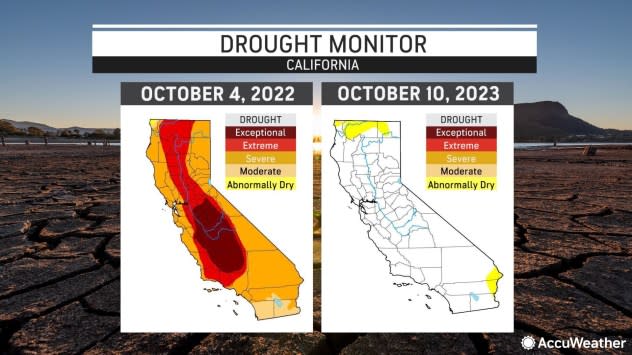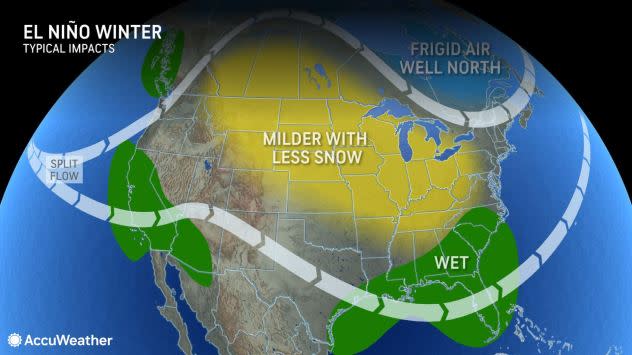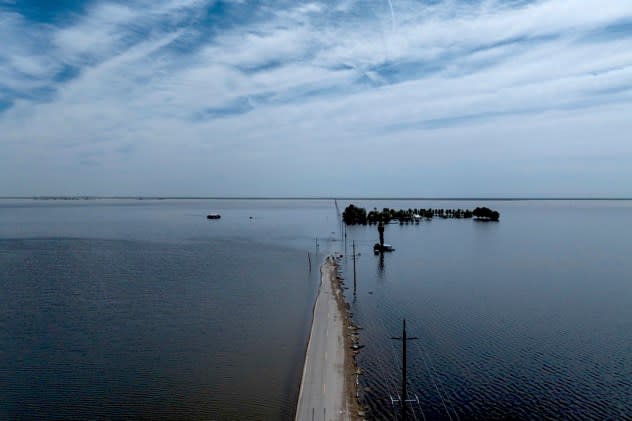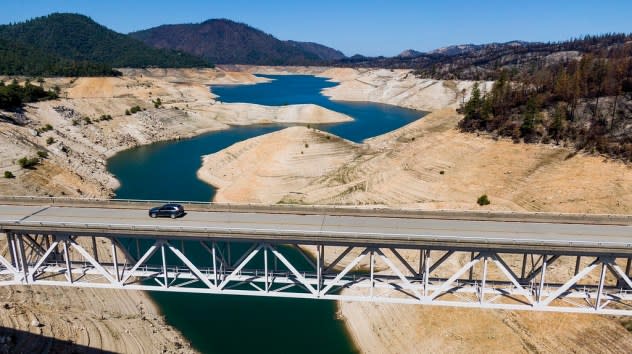California's battle with drought vs. floods will be complex heading into 2024
California has been in a long-term battle with drought following multiple winters with little rain and mountain snow that resulted in low levels in water reservoirs, sparked government action to limit water usage across the state and left many to wonder if a drier climate was the new normal. Then, everything changed last winter.
Several months of atmospheric rivers last winter resulted in prolific, record-setting snowfall in the Sierra Nevada and monumental rainfall in the lower elevations that washed away not only short-term drought concerns but also some of the longer-term drought woes.
 |
"Given what happened last winter and the current state of water supplies in California, even a near-normal winter or slightly below-average winter would set the stage for no problems through 2024 and then into 2025," AccuWeather Western Weather Expert and California resident Ken Clark said.
Drought has plagued other regions of the country in recent years, but the implications are much different in California.
"As California's economy goes, so does the U.S. economy and even greater implications to the world economy," Clark explained. "In a drought, especially a multiyear drought, it becomes increasingly difficult to raise crops, water prices rise, putting a strain on the farmer's budget and the food becomes more costly to the consumer."
Roughly 75% of all of the country's fruits are grown in California, as well as more than one-third of the country's vegetables, according to the California Department of Food and Agriculture. Every year, the state produces over $10 billion in dairy products, $5.5 billion in grapes and $2.15 billion in lettuce.
 |
In this Aug. 16, 2007, file photo a worker harvests romaine lettuce in Salinas, Calif. (AP Photo/Paul Sakuma, File) |
Additionally, roughly 1 in 10 people in the United States live in California, meaning that when the state faces a harsh drought, millions of people have to cope with the direct implications.
At the start of October 2022 before the arrival of the wet season, 99% of California was in drought, with more than 40% of the state in "extreme drought," according to the U.S. Drought Monitor. Following an onslaught of storms last winter, the gradual snowmelt throughout the summer months and rain from Hurricane Hilary in August, all of the state is now drought-free.
"All the big reservoirs are well above 100% historical average values," Clark said.
 |
Water rushes out of the Oroville Spillway at Lake Oroville on Sunday, March 26, 2023, in Butte County, Calif. The California Department of Water Resources was releasing water to create room at the reservoir for anticipated snowpack melt. At the time of this photo, the reservoir stood at 82 percent of capacity and 118 percent of its historical average. (AP Photo/Noah Berger) |
While the reservoirs were quick to fill, it is taking much longer to replenish wells used by farmers in the Central Valley and Southern California.
"Ground water recharging is slower than reservoirs," Clark said. "Last winter really helped, but it takes more than one wet winter to make a huge dent."
El Niño will be in the driver's seat this winter, dictating the weather patterns across North America. El Niño occurs every few years when the water temperature near the equator of the eastern Pacific Ocean is above the historical average for an extended period of time. This change in the ocean shifts the jet stream and ultimately the storm track across North America.
In California, El Niño typically promotes stormy conditions throughout the winter, but AccuWeather meteorologists warn that not every El Niño is the same.
"Will this El Niño act like a 'typical El Niño,' or will it throw a curveball?" Clark said.
 |
An El Niño pattern often ushers in an active storm track and resultant wetter conditions than the historical average across southern parts of the U.S. |
A wet and snowy winter in California would further quell long-term drought concerns but could also increase the danger to lives and property.
"A series of higher-end atmospheric rivers impacting California in rapid succession raises the risk of very serious or even catastrophic flooding in some areas," Clark explained.
Even if the precipitation this winter is not as extreme or as frequent as last winter, a season with rain and snow above the historical average could set the stage for more flooding problems during the first half of 2024.
During the spring and early summer, rising temperatures cause the deep snowpack in the mountains to melt. The water that was once locked in the high elevations then feeds downstream and can cause flooding along rivers in a hurry even during dry and sunny conditions.
This was the case during 2023 when accelerating snowmelt caused rivers to flood farm fields. In the San Joaquin Valley, the influx of water caused a "ghost lake" to appear for the first time since 1997.
Tulare Lake flooded nearly 30 miles of farmland, and another stormy winter could resurrect the lake again in the spring.
 |
Farmland in the Tulare Lake Basin is submerged in water in Corcoran, Calif., Thursday, April 20, 2023, after more than a dozen atmospheric rivers dumped record-setting rain and snowfall. Residents in rural communities in the heart of the state are facing the prospect of being marooned by rising rivers or flooded out. (AP Photo/Jae C. Hong) |
All signs point toward more long-term drought relief in California through the first half of 2024, but as time passes, the pendulum may swing back in favor of drought.
Following a winter of El Niño, which favors stormy conditions in California, it is possible that it will be replaced by La Niña, which usually promotes drier winters in the state.
"An earlier return to a La Niña pattern later in 2024, could set the stage for drought issues to reemerge later in 2025 in some parts of California," Clark explained.
 |
A car crosses Enterprise Bridge over Lake Oroville's dry banks on May 23, 2021, in Oroville, Calif. (AP Photo/Noah Berger, File) |
It is still too far in the future to predict the state of El Niño or La Niña in 2025, but given California's recent history with drought, it is not too early to entertain the possibility.
"Conserving water, whether in a drought or not, makes a lot of sense," Clark explained. "Save water now so when the next drought happens, and it will, the supply remains for you, other people and businesses who depend on it."
Want next-level safety, ad-free? Unlock advanced, hyperlocal severe weather alerts when you subscribe to Premium+ on the AccuWeather app. AccuWeather Alerts™ are prompted by our expert meteorologists who monitor and analyze dangerous weather risks 24/7 to keep you and your family safer.







